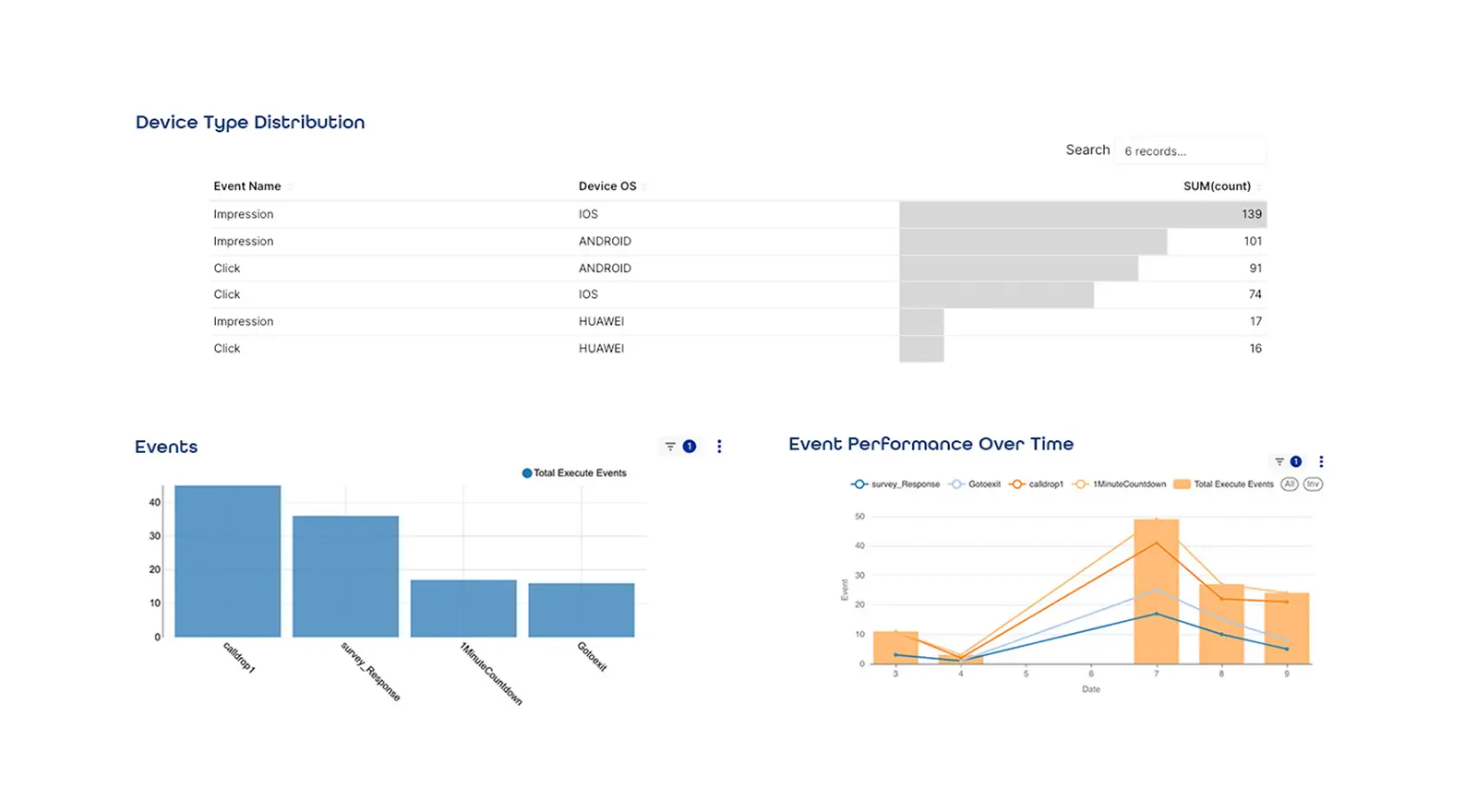Unique Visitor
What are Unique Visitors?
A unique visitor, also known as a “Unique User” in marketing analytics, refers to an individual who visits a website or app at least once within a specified time period.
Unlike total page views, which count every time a user visits the site, the unique visitor metric counts each person only once during that period, regardless of the number of visits they make.
For instance, if a user navigates to a webpage, explores additional pages, leaves the site, and subsequently returns to view more pages, they would fit the “unique visitors” definition and be counted only once.

Why is It Important to Measure Unique Visitors?
Counting unique visitors is crucial for businesses and marketers because it provides valuable insights into user engagement with their website or app. Here are some key reasons why tracking unique visitors is important:
1. Understanding Audience Reach
Unique visitors show how many distinct individuals are accessing a website to help businesses understand the real size of their audience. By comparing unique visitor data over time, businesses can track whether their audience size is growing, shrinking, or staying the same, and adjust their acquisition strategies accordingly.
2. Assessing Campaign Effectiveness
Businesses use the unique visitors metric to evaluate the reach of campaigns, determining if they are attracting new users or just retaining existing ones. These findings allow them to optimize marketing campaigns and refine messaging to resonate better with target audiences.
3. Avoiding Misleading Data
Measuring unique website visitors helps businesses distinguish between traffic volume and actual engagement. If a business only tracks total visits, they might overestimate how well their website is performing when in reality, they’re getting a lot of repeat traffic.
4. Segmenting Audiences
By tracking unique visitors, businesses can differentiate between new users and returning ones. This is valuable because it allows for targeted messaging. New visitors might need more introductory content or offers to convert them into customers, while returning customers might be further down the conversion funnel and could benefit from personalized experiences or promotions designed to encourage customer loyalty and repeat purchases.
How are Unique Visitors Measured & What are Their Limitations?
There are several methods used to track unique visitors, typically involving technologies such as cookies, IP addresses, and user accounts.
1. Cookies
Cookies are small text files stored on a user's device when they visit a website. The website can then recognize this cookie on subsequent visits, ensuring that repeat visits from the same user are counted only once as a unique visitor.
Limitations: Users can clear their cookies, which resets the unique visitor count. Users may also visit a website from different devices or browsers, which results in them being counted as separate unique visitors.
2. IP Address Tracking
An IP address is a unique numerical label assigned to each device connected to the internet. It can be used to identify the general location of a user or the device accessing a site. If multiple visits from the same IP address occur within the time period being measured, it counts as a single unique visitor.
Limitations: Multiple people might share the same IP address, such as in a household or public Wi-Fi network, so IP address tracking isn't always a perfect indicator of a unique visitor.
3. User Accounts
Many websites or apps require users to create accounts and log in to access personalized content or services. Every time they visit the site, regardless of the device, their login credentials help the system recognize them as the same unique visitor.
Limitations: If users don’t log in, or clear their session by logging out, they may be treated as a new visitor.
4. Device Fingerprinting
Device fingerprinting is a method of tracking unique visitors based on characteristics of their device, such as the operating system, screen resolution, or browser type. A combination of attributes is collected from the user’s device, creating a "fingerprint" that is unique to them.
Limitations: This method can be more complex to implement and may raise privacy concerns for users.
5. Analytics Tools
Tools like Google Analytics and other web analytics platforms combine multiple tracking methods mentioned above to provide businesses with detailed reports on unique visitors.
Limitations: The accuracy of unique visitor tracking can still be impacted by ad blockers, cookie restrictions, or privacy laws like GDPR.
While these traditional methods of tracking unique visitors offer valuable insights, they each come with certain limitations. These limitations can hinder the accuracy of visitor data, especially when trying to understand cross-device behavior, handle privacy concerns, or account for inconsistent data caused by tracking issues. This is where a real-time customer engagement platform comes into play.
The Role of a Real-Time Customer Engagement Platform in Measuring Unique Visitors
A real-time customer engagement platform offers more advanced and integrated solutions to both measure unique visitors more accurately and empower businesses to leverage this data in meaningful ways.
1. Cross-Device Integration
One of the major advantages of real-time customer engagement platforms is their ability to track cross-device behavior seamlessly. Traditional cookie-based methods struggle with tracking users who switch between devices, such as mobile phones, desktops, and tablets.
However, an omnichannel martech software can integrate data across different devices and sessions by associating a user’s activities through account logins, session IDs, and device fingerprinting. This ensures that even if a user accesses a site from multiple devices, they are counted as one unique visitor, providing a more accurate view of overall audience engagement.
2. Adhering to Privacy Laws
In light of rising data privacy regulations and increasing consumer concern about online tracking, relying solely on cookies for tracking unique visitors has become more challenging. Real-time martech platforms address this by minimizing reliance on cookies and using more privacy-compliant tracking mechanisms, such as user authentication, IP anonymization, or device fingerprinting. These methods allow businesses to track unique visitors while adhering to privacy laws.
3. Enhanced Data Accuracy with AI
Customer engagement platforms often leverage machine learning and artificial intelligence to improve data accuracy and prediction. These technologies can analyze large datasets in real-time to identify patterns, behaviors, and anomalies. For instance, AI can cross-reference user behaviors across multiple sessions and devices, accurately attributing them to a single unique visitor despite challenges like IP address changes, VPN usage, or cookie blocking.
4. Immediate Decision-Making
As unique visitors are tracked and data is collected in real time, businesses can instantly see how many distinct individuals are engaging with their content, products, or services. This allows businesses to adapt and optimize their strategies on the fly. For example, if a business notices a sudden spike in unique visitors from a particular location or demographic, it can immediately adjust marketing campaigns, tweak website content, or deploy personalized offers to maximize engagement and conversion opportunities.
5. Leveraging Unique Visitor Data for Segmentation
Customer engagement platforms can integrate unique visitor data with other customer data sources, such as CRM systems and social media insights, to help businesses create detailed user profiles. This allows for more dynamic segmentation of visitors based on various factors such as demographics, behavior, interests, and preferences.
evamX: Unlocking Real-Time Insights with Accurate Unique Visitor Tracking
evamX is a real-time, omnichannel customer engagement platform that allows businesses to accurately track and segment their audiences while adhering to privacy laws and respecting customers' choices and agency.

With its cutting-edge modules such as Digital Engagement and Insight Tracker, evamX is able to circumvent the limitations of traditional tracking methods and leverage unique visitor data to optimize marketing strategies.
Join the Evam Community
Subscribe to receive the latest insights, news, and updates straight to your inbox.


